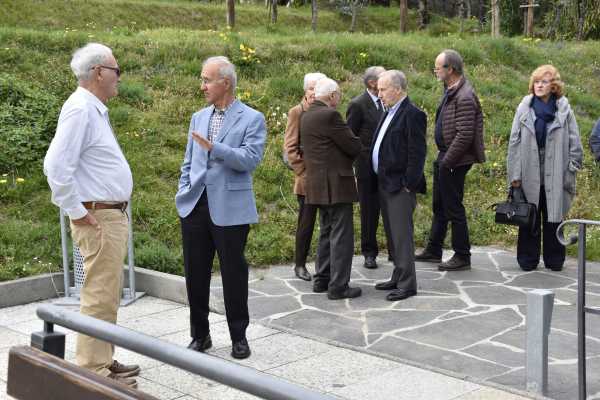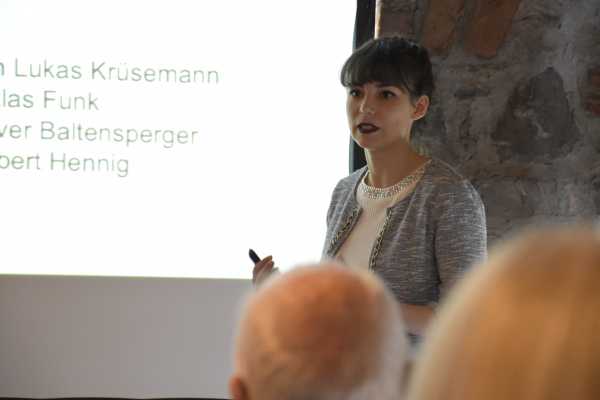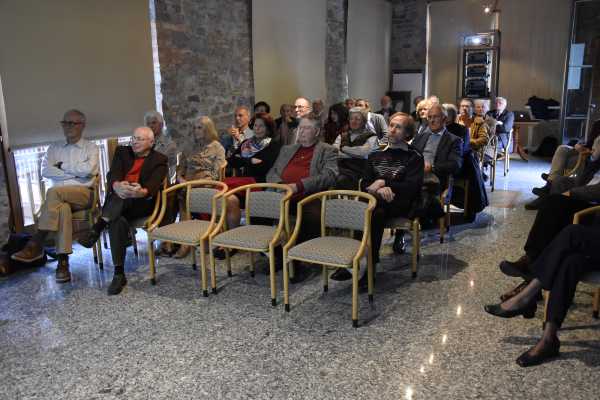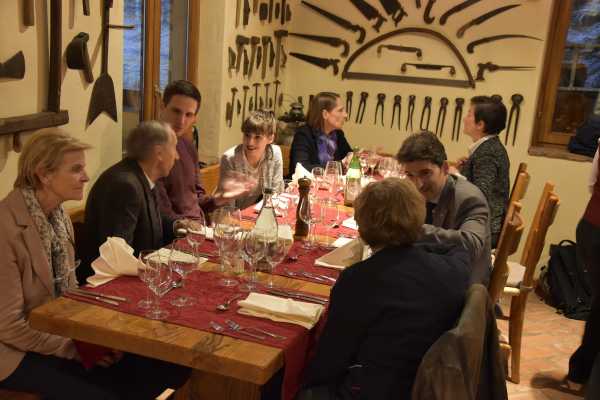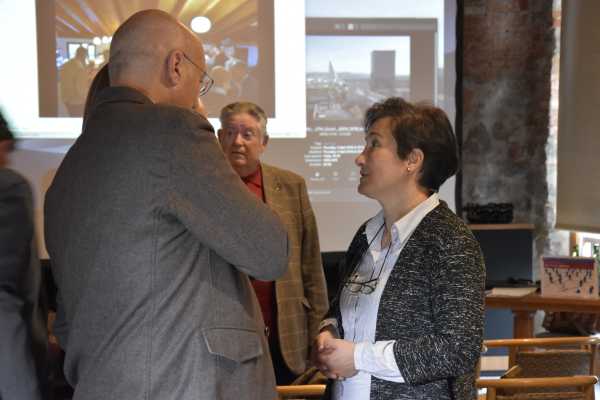AROMA: Autonomer Roboter für Odorant-Messungen in der Luft
OG Ticino Alumni
Am 6. April 2019 hielt die Ortsgruppe Tessin ihre jährliche Generalversammlung ab. Nach der Versammlung hatten wir das Glück, an einer Konferenz von Elisa Garulli, welche das AROMA-Projekt präsentierte, teilzunehmen. AROMA ist ein Roboter, der flüchtige Substanzen in der Luft aufspüren kann; ein Team von ETH StudentInnen baute einen Prototyp im Rahmen des iGEM’18 internationalen Wettbewerbs.

Der Text wurde nicht ins Deutsche übersetzt.
Initialization and vision
The project began with the selection of team members by the Department of Biosystems science and engineering at ETH Zurich. On Friday April 13, 2018 eight students received a mail informing them that they had been selected to be part of the externe Seite iGEM’18 team, and they would have the chance to participate in this international challenge.
The team started with a brainstorming session to clarify their mission and decided to build a robot with a biosensor for odorant measurements. This is how the Autonomous Robot for Odorant Measurement in the Air, AROMA for short, was born. AROMA is able to detect volatile substances in the air. It is meant to work in situations where it is difficult for a human being to collect measurements directly, in particular in presence of hostile situations such as contaminated environments, mine fields, or any other situation in which life could be endangered.
Additionally, AROMA needs to fulfill other characteristics: Firstly, the solution is meant to be adaptive, which means that it has to be able to perceive different molecules. Secondly, it has to be fast, which is important in cases of gas leakages. This leads to the concept of a generic robotic platform, which can be easily reconfigured to adapt to different situations.
Concept and laboratory tests
The measurement takes place in four main phases. The first phase consists in the collection of the substance; molecules have to be captured and diluted so that they can be analyzed. This is similar to what happens in the mucosa of human noses. In the second phase, the substance is passed to the biosensor, which will behave differently depending on the substances. The third is an imaging phase that consists of a video camera and digital image processing. The fourth and final step entails the computation and length of the next step in the field.
The biosensor is made of bacteria that react to a specific molecule. Therefore, it is important to engineer the right bacteria depending on the molecule that we want to detect. It is possible to achieve the molecule detection because bacteria are attracted by specific substances. When bacteria move, they rotate their ‘tails’ with a specific spin. When they need to change direction, they invert the tail spin. A change of direction means that they have detected the interesting substance and try to reach it.
Realization and competition
After having researched, developed and simulated the concept in the laboratory, a first version of the microscope was built with LEGO. The final prototype was put together with standard modules available on the market such as platform, wheels, motors and 3D printed components.
The project highlight was the official presentation at the iGEM’18 Giant Jamboree in Boston, where AROMA got nominations for Best Hardware, Best New Application, Best Product Design and Best Presentation. Unfortunately, it won none of these prizes. Nonetheless, and for the first time ever, ETH Zurich won the iGEMers Prize, a prize voted by all teams that took part in the competition.
Elisa Garulli has a BSc in Biomolecular Sciences and Technologies from the University of Trento. Her passion is synthetic biology, and she is currently an MSc student at the Department of Biosystems Science and Engineering at the ETH Zurich (D-BSSE). The AROMA project was supervised by Prof. Sven Panke, Bioprocesses Laboratory (D-BSSE), Prof. Jörg Stelling, Computational Systems Biology (D-BSSE), and Prof. Yaakov Benenson, Synthetic Biology Group (D-BSSE). This project was developed in connection with the iGEM’18 competition by eight students in six months. iGEM is an international competition in the context of biotechnologies and hosts projects from different domains like medicine, biology, environment and computer science.
